Some of the links in this post may be affiliate links.
Peperomia polybotrya, also known as Coin-Leaf Peperomia or Raindrop Peperomia, is a delightful addition to your houseplant collection. The glossy green, thick, heart-shaped leaves are beautiful and the plant remains pretty compact so it is great for smaller spaces!
Native to Colombia and Peru, this upright grower doesn’t get much larger than about 12-15 inches or so, so it can work for any space!
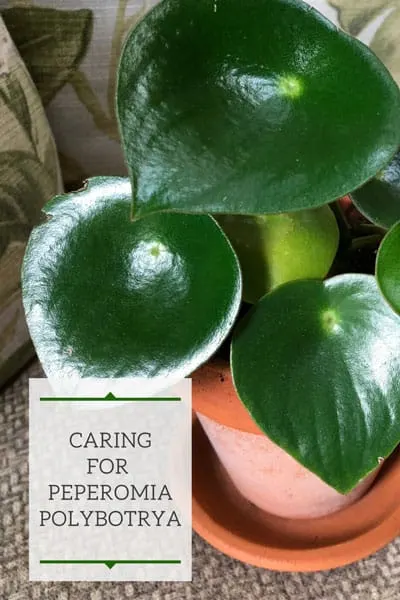
Table of Contents
PEPEROMIA POLYBOTRYA CARE
LIGHT
Raindrop Peperomia prefers the ubiquitous “bright indirect light” and warm temperatures (try not to go below 60F). That being said, indoors I give my plant a little bit of direct sun. Your plant will be happy in an Eastern exposure window where it receives gentler morning sunshine.
A nice big Northern exposure window will also work.
Be careful of too much direct sun though. You may want to diffuse too many hours of sun from Western or Southern exposure windows.
Your plant will tend to get leggier in lower light, so keep this in mind. Your plant should be right in front of a window for best growth.
FERTILIZER
Use an all-purpose houseplant fertilizer throughout the growing season, but refrain from fertilizing during the winter months when growth either slows down or comes to a halt.
I personally use Dyna-Gro Grow for most of my houseplants. It is an incredible, complete premium fertilizer that contains all the macro and micronutrients for plant growth.
I simply add 1/4-1/2 teaspoon per gallon of water and use every time I water. I prefer this method (dilute strength with every watering) because I don’t have to remember when I last fertilized.
I’ve achieved amazing growth using Dyna-Gro Grow and highly recommend it!
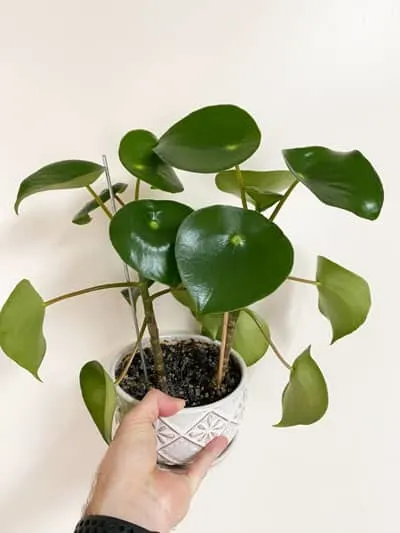
WATERING
Allow your plant’s soil to dry out pretty well before watering again. In fact, let it go almost completely dry, and then water thoroughly.
Make sure your pot has a drainage hole and always allow excess water to drain away. Never let your plant sit in water or you will increase chances of your plant rotting.
The thick, fleshy leaves store a good amount of moisture, so it is important that your soil dries out almost completely. Allow at least the top half of the soil to dry out before thinking about watering again.
That being said, don’t wait forever after the soil has completely dried out. If you hold off watering for too long, the lower leaves will yellow and your plant will get leggy.
SOIL
Having an extremely well drained soil is crucial for this plant. Some plants are forgiving when it comes to soil, but this one is not.
I like to use the same soil blend that I use for my Peperomia Ruby Cascade which is:
2 parts of Espoma Organic Cactus Mix mixed with 1 part Bonsai Jack’s 1/4″
This creates a sharply draining mix for your Peperomia which it will love.
Don’t skip on the pumice! When I first grew this plant from two cuttings that a friend sent me, I rooted them and planted them in just straight cactus mix.
They were fine for a while, but then during the winter time, one of the two cuttings actually rotted at the stem on the soil line. And it was growing in a small terra cotta pot to boot.
I was able to salvage it though by cutting the rotted part of the stem off, re-rooting it again in water, and then planting it back in soil.
I can’t overemphasize the need for sharp drainage on this plant, so I highly recommend the potting mixture I described above.
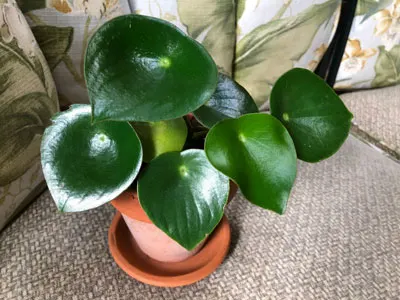
PEPEROMIA POLYBOTRYA OR PILEA PEPEROMIOIDES?
These two plants look very similar, but it is easy to tell the difference. Take a look at the photo below.
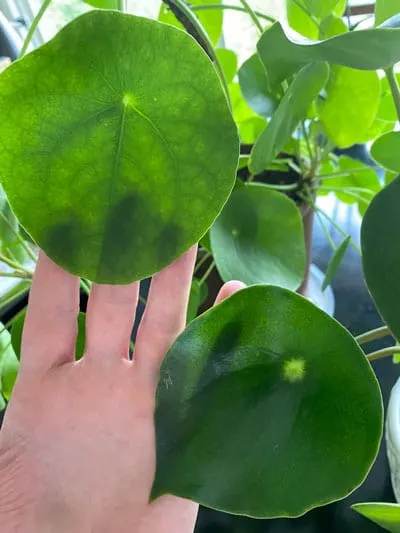
In the upper left, you see a Pilea peperomioides (Chinese Money Plant) leaf. In the bottom right, you’ll see Peperomia polybotrya. Notice the pronounced tip at the very end of the leaf that the Pilea lacks.
PROPAGATING RAINDROP PEPEROMIA
These plants are easy to propagate using either water or soil propagation. Springtime is a great time to propagate and your chances of success will be greater. Try to avoid propagation during the wintertime if you can help it.
WATER PROPAGATION
Make sure your stem cutting has at least a couple leaves, and make sure that one or two nodes are in water. The nodes are where the leaves meet the stem. You can simply take off the bottom leaf and make sure that this part of the stem is under water.
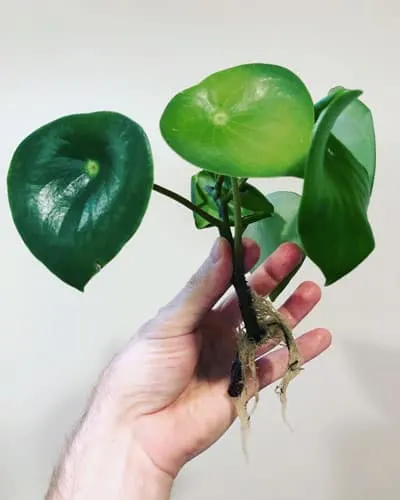
Be sure to change the water frequently (once a week minimum) to keep it fresh and help prevent rotting.
Make sure that when you pot up your cuttings, that you use the soil mixture I previously described and use a small pot. Don’t be tempted to pot these up in a large pot. Start small and don’t repot until your plant is pot-bound.
These plants definitely like tighter quarters, and small pots also ensure that your soil dries out quickly enough.
And while you’re water propagating, don’t miss my post on the best houseplants to propagate in water.
SOIL PROPAGATION – STEM CUTTINGS
You can also prepare the cutting as described above, but instead of putting it in water, simply dip the cutting into rooting hormone, and insert it into a small pot of soil.
If you use this method, it is important to keep the humidity high while the plant is rooting. Place the plant in a clear plastic bag and make sure that the leaves are not touching the bag.
You can put a couple bamboo stakes in the pot to ensure that the cutting keeps away from the bag. Keep your plant out of direct sun so it doesn’t cook while it is rooting!
Keep the soil moist, but not wet, and remove the plastic bag once the cuttings have rooted and starts growing.
SOIL PROPAGATION – LEAF CUTTINGS
I haven’t tried this method yet, but I will soon and will post the results here. You can also propagate this plant with just a single leaf.
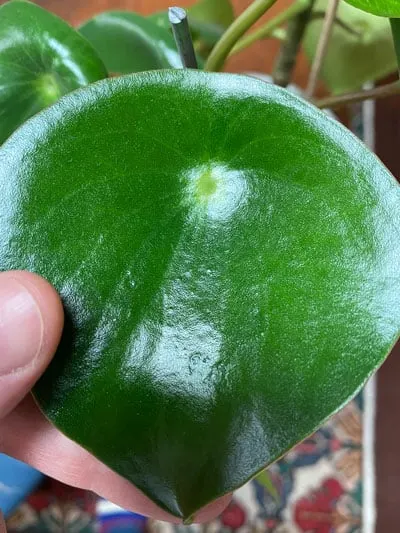
In the photo above, you would simply cut the leaf horizontally straight through the middle.
Then you can dip the cut end of each leaf half into rooting hormone, and insert into a moist potting mix. You can use the plastic bag method describe above, and then remove it when you see plantlets coming out of the soil.
Fun right?
If you’ve enjoyed this post, check out my post on 10 easy Peperomia varieties.

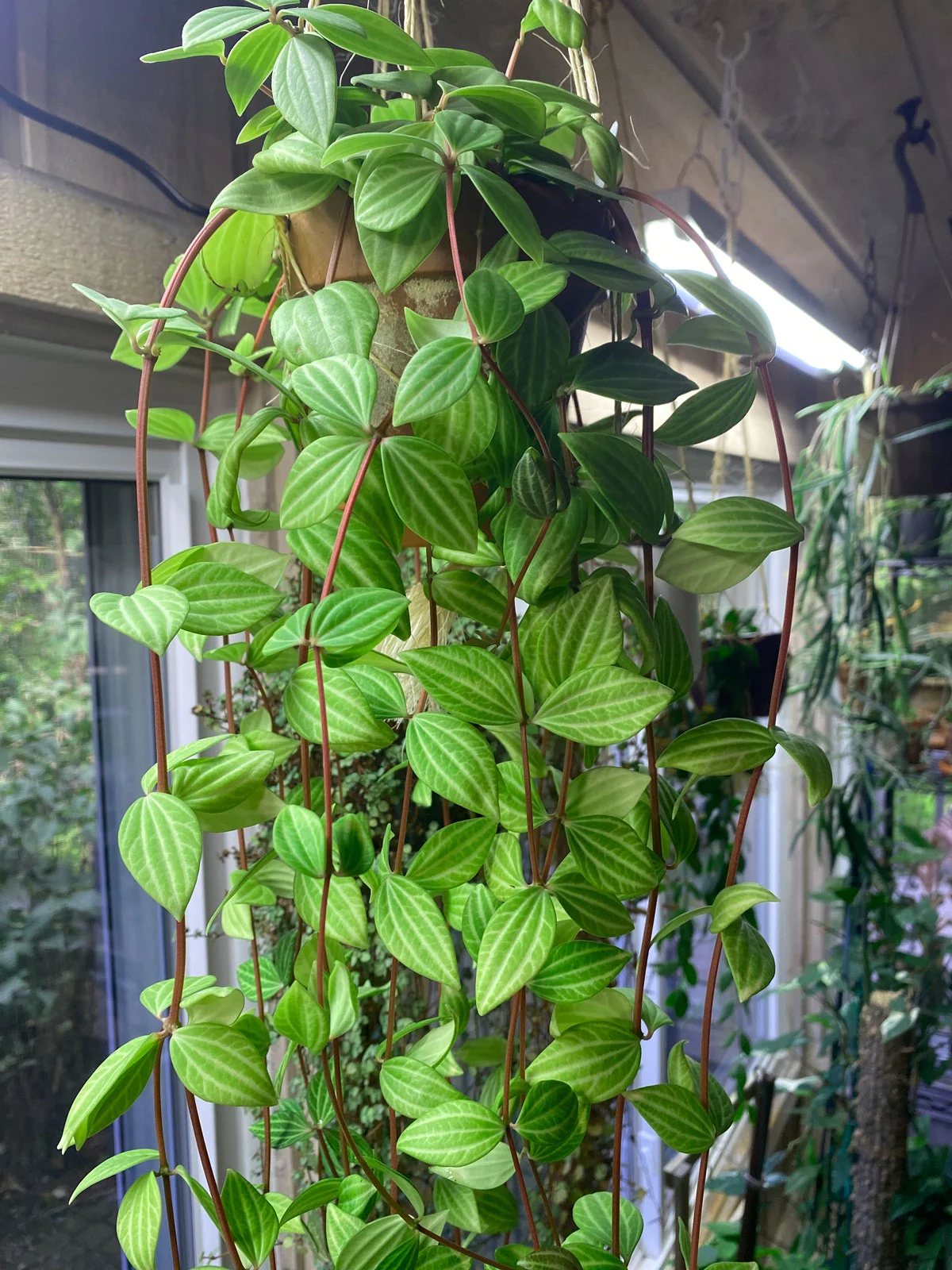
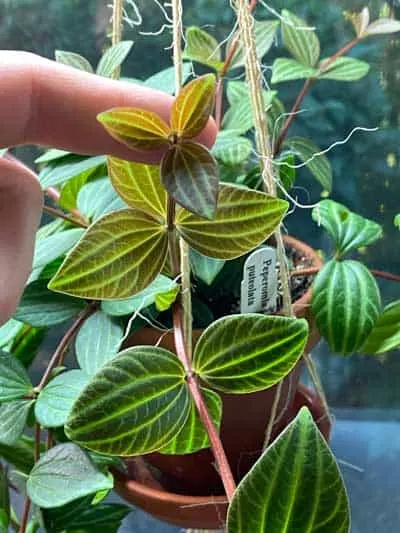
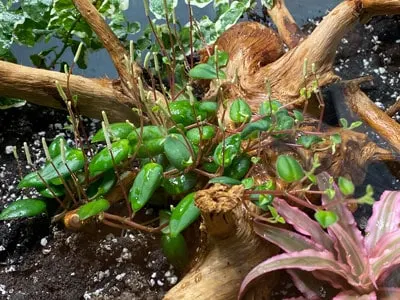
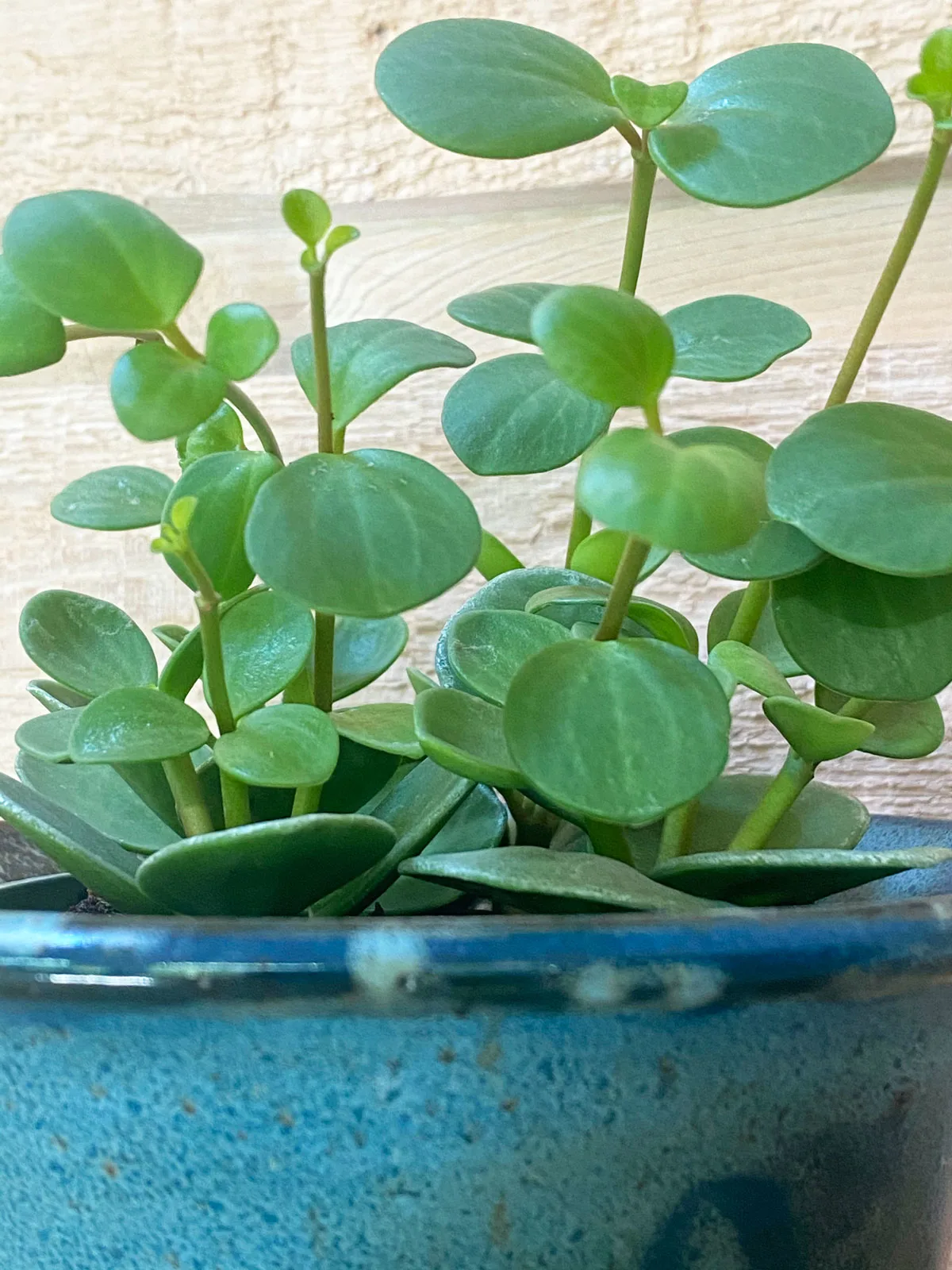
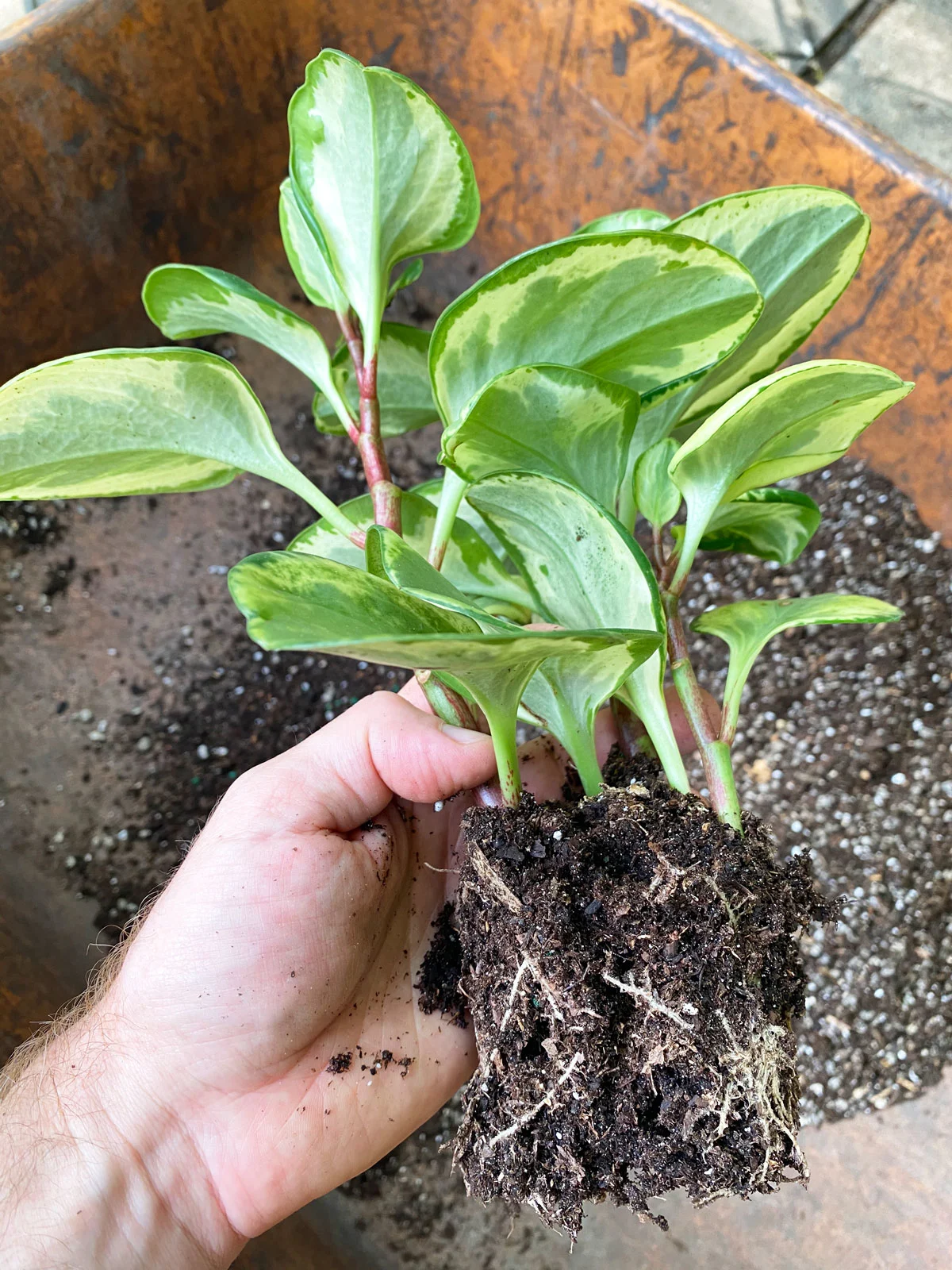
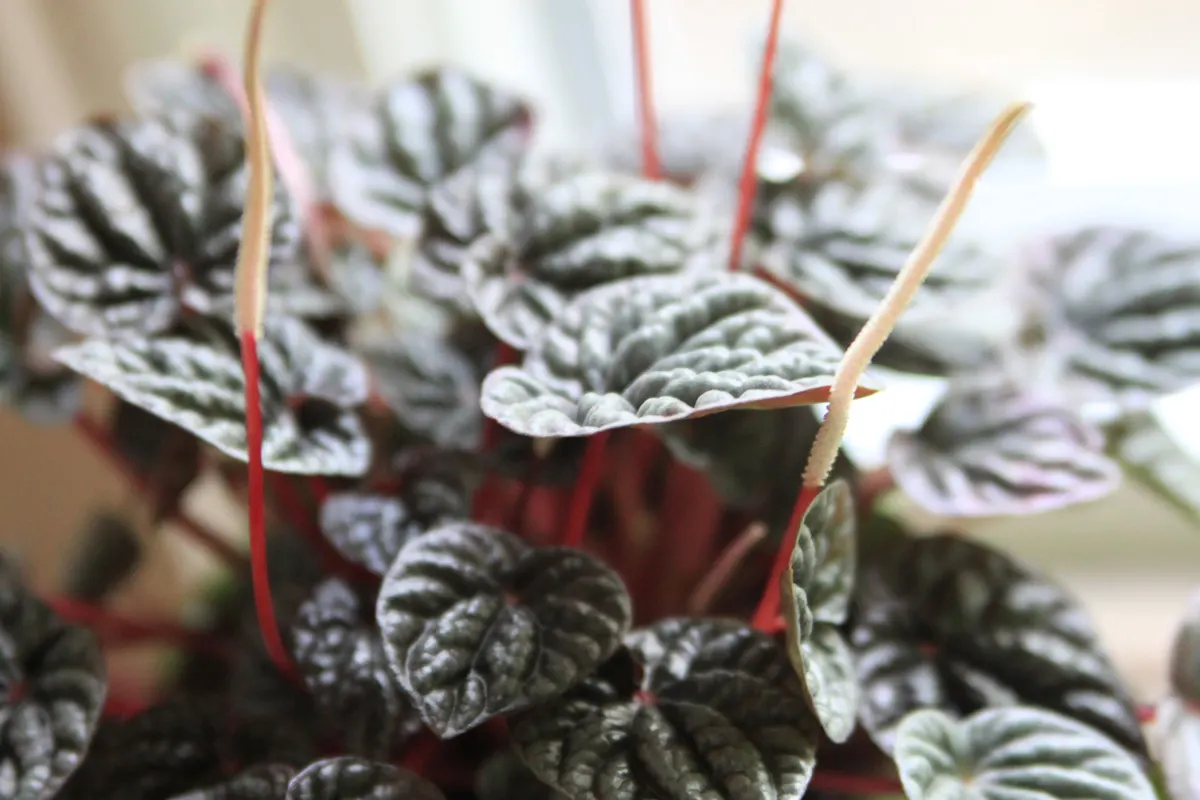
Marv
Monday 4th of September 2023
I have had a raindrop plant for ages and told everyone it was a Chinese money plant. Now I see it is not. Thank you thank you thank you for all the information. However, it is huge, many branches and has several weird blooms! I guess I have to get to work on it and I am looking forward to raising a bunch of little ones.
Raffaele
Monday 4th of September 2023
You're very welcome Marv! Sounds like it is happy!
TOdd
Wednesday 7th of September 2022
Mine was growing beautifully, then I up-potted it, it was quite tight in a little nursery container, and since it's been dropping leaves, they seem to get a little curl, lose their gloss and drop off. any ideas? Thanks, Todd
Ann Pope
Saturday 14th of May 2022
I purchased a raindrop plant reently and it's on my patio (Florida) doing so well that I'm wondering if I have to do something with it because its getting lots of new leaves under the bigger leaves on the stems and is starting to look very crowded. Should I just let it go and let it do it's thing?
Raffaele
Monday 16th of May 2022
I would say let it do its thing :-) (Unless you want more plants...then you can take it out of the pot and divide it).
Kaja Kunimägi
Saturday 27th of March 2021
Thank You! I bought this plant in a search of a pilea i lost long time ago. Saw it in a flower shop in a small town and bought it. Tho it looked a bit different i genuinely thought it's some sort of pilea. Then i stumbled on to this article and now it's clear for me! Love this plant. It's so cute!
Raffaele
Wednesday 31st of March 2021
You're very welcome!
Sofia
Sunday 19th of July 2020
Hi! I just recently rescued my polybotrya from a garden centre. It’s suffered a bit of a battering and all the large mature leaves have been torn and ripped and don’t look the best. There’s lots of little new leaf shoots coming but not getting any sunlight. Should I cut the mature damaged leaves off?
Raffaele
Tuesday 21st of July 2020
Hi Sofia! If the leaves are in really bad shape, you can go ahead and remove them.